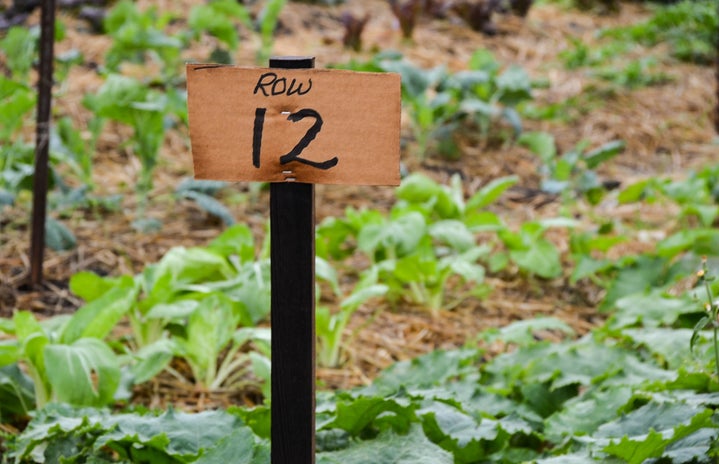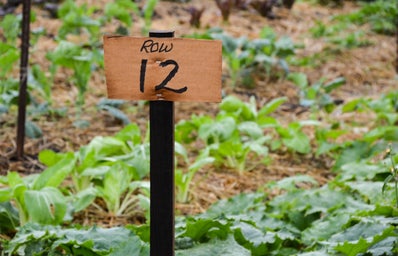Quarantine: long days of pacing inside to the sound of you professor’s voice over Zoom and nights illuminated by computer and phone screens projecting Netflix and Instagram stories on an eternal loop. These days, life can feel claustrophobic and cyclical as each day blends into the next. During these times, it’s hard not to feel down and blue, so maybe you should try feeling green! Gardening during quarantine is a fabulous way to pass the time while giving yourself a project to look forward to each day along with a feeling of structure at a moment in life that is seemingly structureless and uncertain.
Not sure where to begin? This article is here to help! Let’s dive in to why you should garden and how you should do it.
Spending time outside is remarkably wonderful for you, physically and mentally; gardening provides a source of motivation to soak up some sun on a daily basis! Gardening assists us in moving beyond a perfectionist mindset (psychologytoday.com). When you begin gardening, you will mess up, a few plants may die, and this is okay! Gardening is the perfect place to make mistakes and practice accepting them as a part of life. As you continue to practice, your ability to care for your plant babies will improve, and you will feel pride in seeing their (and your own) growth.
Gardening also assists in fostering a growth mindset and aids the hindrance of depression (The Guardian). Growing your plants physically helps you visualizes a growth mindset. As your plants grow, you grow with them. Learning how to pay close attention to the needs of another being fosters the habit of paying attention to your own needs, feeding yourself the love, compassion, or whatever it may be that you need to feel emotionally stable and at peace. In fact, according to The Guardian, gardening has been shown to assist in the stabilization of mental health, reducing stress and depression. Growing Health’s research suggests that simply viewing a green space helps people relax and releases tension.
Now that you know a little about why you should garden, lets dig in to the how.
- Know your plants and your environment.
-
Just like humans, every plant is different and has its own needs and preferences. Some plants like more water; some only prefer being watered once a week. Some may love the sun, while others get easily burned by its rays. Knowing your plant’s ideal growing environment and preferences is key in beginning a successful garden.
In order to accommodate for your plants’ needs, you must know the environment you are placing them in. It is imperative that you are familiar with the sunlight, temperature, and humidity of the room or the outdoor area your plant will be residing in. In order to keep track of this, you can use a compass to determine the direction of sunlight throughout the day within the space and place your plant accordingly. If the plant prefers a lot of sun, place it in an area you know receives a lot of constant sunlight throughout the day! If your plant prefers shade, make sure they are placed at an angle in which the sun does not directly hit their leaves. Temperature and humidity can be measured by using a hydrometer. These devices help tell whether or not you plant will need to be placed in a more humid environment (i.e. placed inside or outside/in a different space). Some plants are tropical and like a lot of humidity which means they may need to be placed near a humidifier.
Make sure you keep your plants’ needs in mind when choosing what you will grow in your garden and what you are able to accommodate for!
- Start with easy and fast growing plants.
-
As a beginning gardener, it is wise to choose plants that are easy to take care of and that grow fast. As a beginning gardner, you are more inclined to make mistakes (which is totally ok!), but it may be more beneficial to practice on plants that are hardier and require less maintenance. Choosing more simplistic plants will allow you to hone your gardening skills before you move on to more complicated species.
Additionally, in choosing your plants, make sure you evaluate how much time and effort you are willing to put into your garden; even easy plants have their needs! Ideally, begin with plants that require less attention, and work your way up by adding slightly more picky plants to your collection. This will ease you into the practice of dedicating more time to your garden gradually.
Fast growing plants are suggested as they are more satisfying for beginning gardeners who may not be as patient in their practice phase. By planting fast growing plants, you are able to see results faster, and if you mess up, the plant will recuperate at a quicker rate.
Three beginner plants that plant kween, Christopher Griffin (@planntkween) suggests are:
– Snake Plant (Dracaena trifasciata)
– Pothos Plant (Epipremnum aureum)
– ZZ plant (Zamioculcas)
- Soil, soil, soil!
-
When it comes to having a successful garden, soil matters! Beginning your plants in well-fertilized, nutritious soil will make all the difference in their success. Plant Kween suggests this soil mixture curated for growth: mix together Fox Farm soil, Fur bark, and perlite. This soil mixture ensures a nutrient rich environment and a soil that is well aerated, allowing water to flow through the pot, preventing stagnant pools which may cause root rot!
- Always repot.
-
It is important that you make sure you are giving your plants enough space to grow! In order to do this, it is vital that your new plant baby be removed from its nursery pot (the pot it arrived in), and given a larger ceramic pot with increased space. In repotting your plant, make sure the new pot is at least two inches larger than the nursery pot. Begin the process by carefully removing your plant from the nursery pot and laying it down. Then, carefully remove the soil from around the roots of the plant. Fill the new pot half way with a foundational bed, then place the plant into the pot. Finally, press the new soil around the plant until the plant is secure. Make sure to apply pressure when doing this to ensure there are no air pockets in the soil.
Once you repot, your plant will be able to grow and thrive in its new and improved space!
- Enjoy the process!
-
Gardening is a learning process. Mistakes will be made, and they are totally welcome! Gardening is a process of growth, for both you and the plants. Let yourself enjoy your time outside, caring for you plant family. Soak up some sunshine, breathe in the fresh air, and admire the greenery. As Plant Kween would say, “Enjoy the process hunty!”
Follow these tips and tricks, and your quarantine will feel brighter (and greener) in no time! For more helpful information follow @plantkween on Instagram. Happy gardening!



